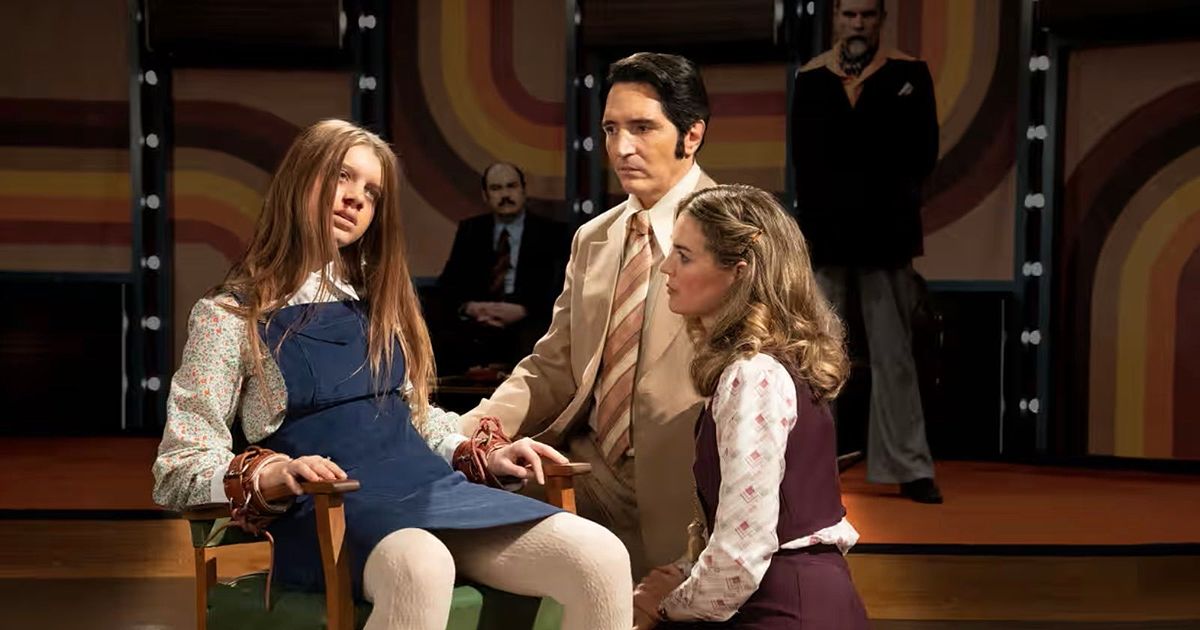Late Night With The Devil Sparks Debate Over AI-Generated Images in Horror Film

Late Night With The Devil, a new horror film, is facing criticism for its use of AI-generated images. The film’s incorporation of AI technology has sparked a debate about the potential impact on the creative industry.
Late Night With The Devil: An AI-Infused Horror Film
Late Night With The Devil, a recently released horror film, is generating controversy due to its utilization of AI-generated images. This incorporation of AI technology has sparked a debate within the creative industry, raising concerns about its potential impact on artists and their work.

( Credit to: Petapixel )
Starring David Dastmalchian as a late-night host, the film takes viewers on a terrifying journey during a live television broadcast in 1977. However, some disappointed fans have noticed the presence of AI-generated images throughout the movie, appearing as interstitials during the fictional live TV broadcast. These images include eerie illustrations like a dancing skeleton in a pumpkin patch and occasional ‘We’ll be right back’ messages.
The AI Controversy: Cutting Corners or Enhancing Storytelling?
The use of AI technology in the production of Late Night With The Devil has sparked criticism from film journalist Matt Bellissimo, who argues that it sets a dangerous precedent. Bellissimo believes that relying on AI-generated images could lead to studios cutting corners and undervaluing the work of photographers and graphic artists, potentially resulting in lower compensation for their contributions.
However, the Cairnes siblings, the writers and directors of the film, have responded to the criticism by acknowledging their experimentation with AI technology for three still images in the film. They further edited these images to create brief interstitials. In their statement to Variety, the Cairnes siblings express gratitude towards the talented cast, crew, and production team who helped bring the film to life.
The debate surrounding Late Night With The Devil’s use of AI-generated images highlights the ongoing discussion about the potential impact of AI on the creative industry. While some view it as a cost-cutting measure that undermines artists, others see it as an innovative tool that can enhance storytelling. As AI technology continues to advance, it becomes crucial for the industry to find a balance that respects the work of artists while embracing the possibilities that AI offers.
AI in the Film Industry: Contentious Issues and Future Implications
The use of AI in the film and television industry has been a contentious topic in recent years. During the strikes by the Writers Guild of America (WGA) and Screen Actors Guild (SAG) in 2023, the use of AI-generated material became a major point of contention. To address these concerns, the new WGA contract includes provisions to protect a writer’s credit and separated rights from being undermined by AI-generated content. Similarly, the SAG deal requires consent and compensation guidelines for using AI to replicate actors’ likenesses.
Furthermore, the film industry has been shaken by the release of OpenAI’s video generator, Sora. This powerful text-to-video model impressed film mogul Tyler Perry to the extent that he halted an $800 million studio expansion. Perry recognized the potential threat it poses to jobs in the movie industry.
With Late Night With The Devil’s use of AI-generated images igniting a fresh debate, it is evident that the impact of AI on the creative industry cannot be ignored. While concerns about cost-cutting and undervaluing artists persist, others see AI as a tool that can push the boundaries of storytelling. Striking a balance between embracing AI’s possibilities and respecting the contributions of artists is crucial as the industry continues to navigate the future of filmmaking.
